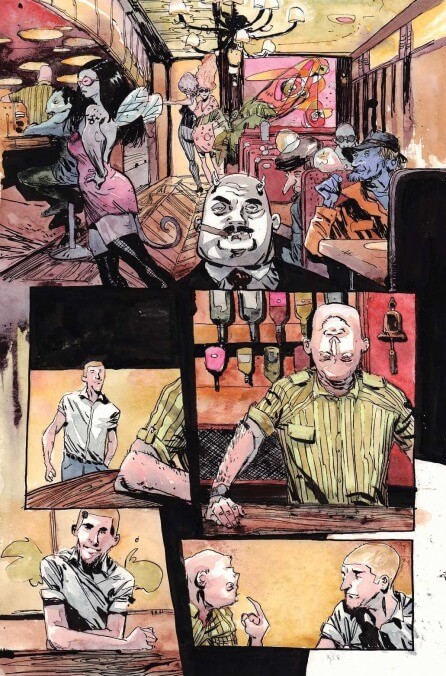King of Nowhere blends the strange and familiar for an intriguing mystery

There’s a sweet spot where fish-out-of-water stories meet small-town freak show stories, and King of Nowhere is planted firmly in the middle. Fans of writer W. Maxwell Prince’s work in Ice Cream Man will see some familiar elements in King of Nowhere, an unsettling balance of familiar and strange that leaves the reader off balance and waiting for the other shoe to drop. The book opens with the protagonist, Denis, lost and confused in the middle of the desert, wandering towards what he hopes is civilization and wondering what sort of situation he’s found himself in this time. It’s not clear what kind of trouble he thinks he’s in, or what kind of trouble he’s been in before, but his expectations quickly go out the window as he keeps moving and draws the readers along with him.
Each person he encounters is stranger than the last, all humanoid but just as varied and unfamiliar to him as to each other. There’s a man with an upside down face, people who appear to be a combination of human and animal, and more. Artist Tyler Jenkins has demonstrated before just how deft his hold is on character design, especially in Black Badge, but this takes it to a new level. Jenkins’s style is sketchy and less crisp than a lot of monthly comics, but no less detailed and intentional. Matched with rapid-fire dialogue, it roots each character to the page and gives them a distinct quality that doesn’t rely solely on their monstrousness to distinguish them.
Jenkins, along with colorist Hilary Jenkins, also does some remarkable work with backgrounds. They’ve always worked well together, balancing lovely water color washes with deep inky blacks and sometimes delicate lines. But King of Nowhere is crowded with color and atmosphere in a way other books have not been: Black Badge had more structured and linear visuals, and Grass Kings relied heavily on large swaths of white to convey the vastness of the space. King of Nowhere is tight and crowded, but feels chaotic and kinetic without being claustrophobic. That’s a line that’s easy to cross, and the Jenkins do a great job of staying on the right side of it while leaving space for letters by Andworld to breathe and get the attention they need.
As an outsider, Denis is seen as something between an oddity and a threat, the only person without any apparent strangeness. He’s quickly sucked into the drama of the unusual place he’s found himself, and the back third of the issue ramps up the stakes as massive monsters appear, Denis takes some risks, and a new threat appears as the issue ends on a well-executed cliffhanger. It feels like Hunter S. Thompson meets Tremors—in the very best way. King of Nowhere is a limited miniseries, slated to run for just five issues, which feels like the perfect length for an experiment such as this one. Prince and the Jenkins are skillful creators and they’ve made something fun, but it’s worth remembering that comics don’t need to run for decades to be successful; oftentimes knowing the full arc of a story is to everyone’s benefit.
